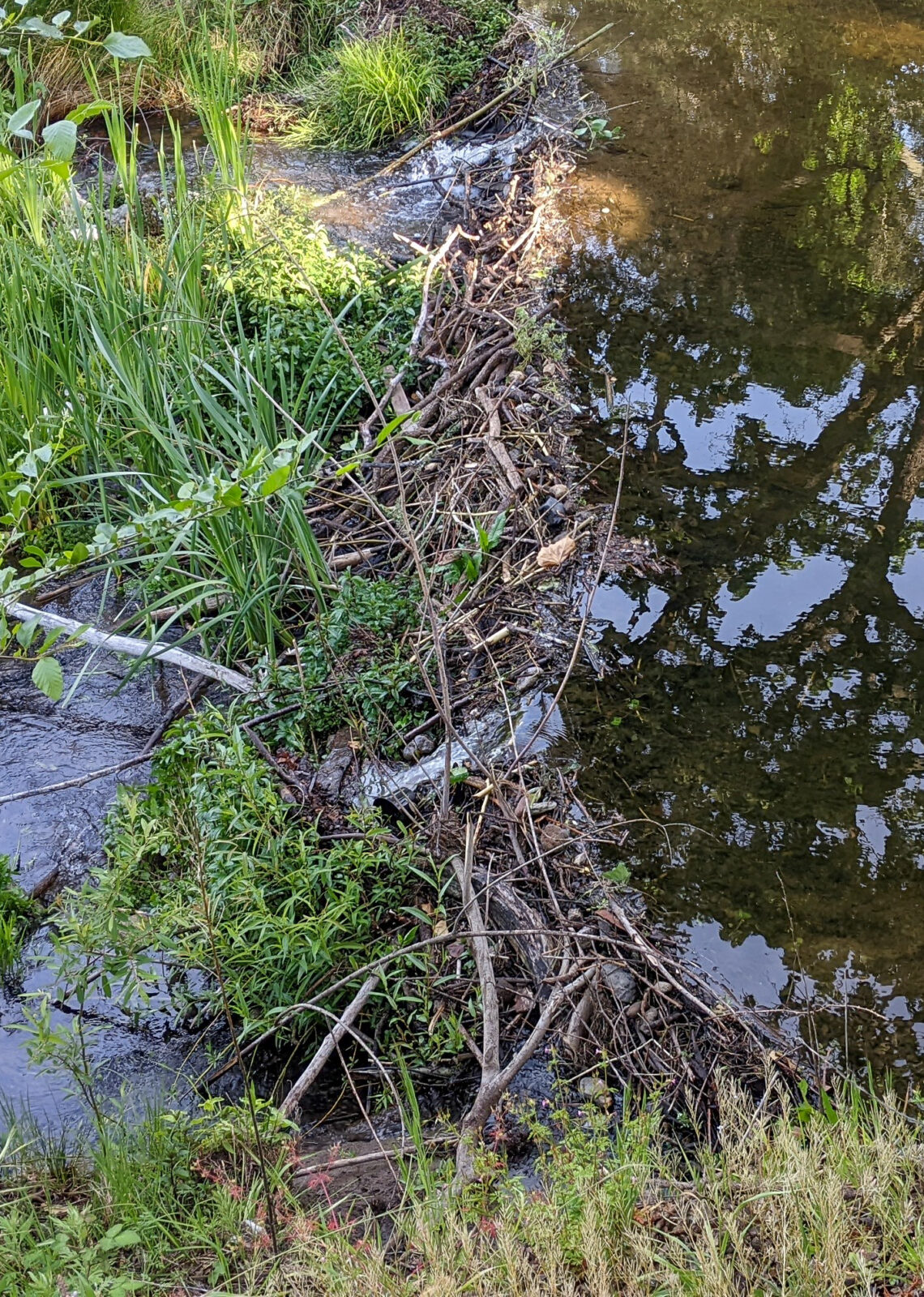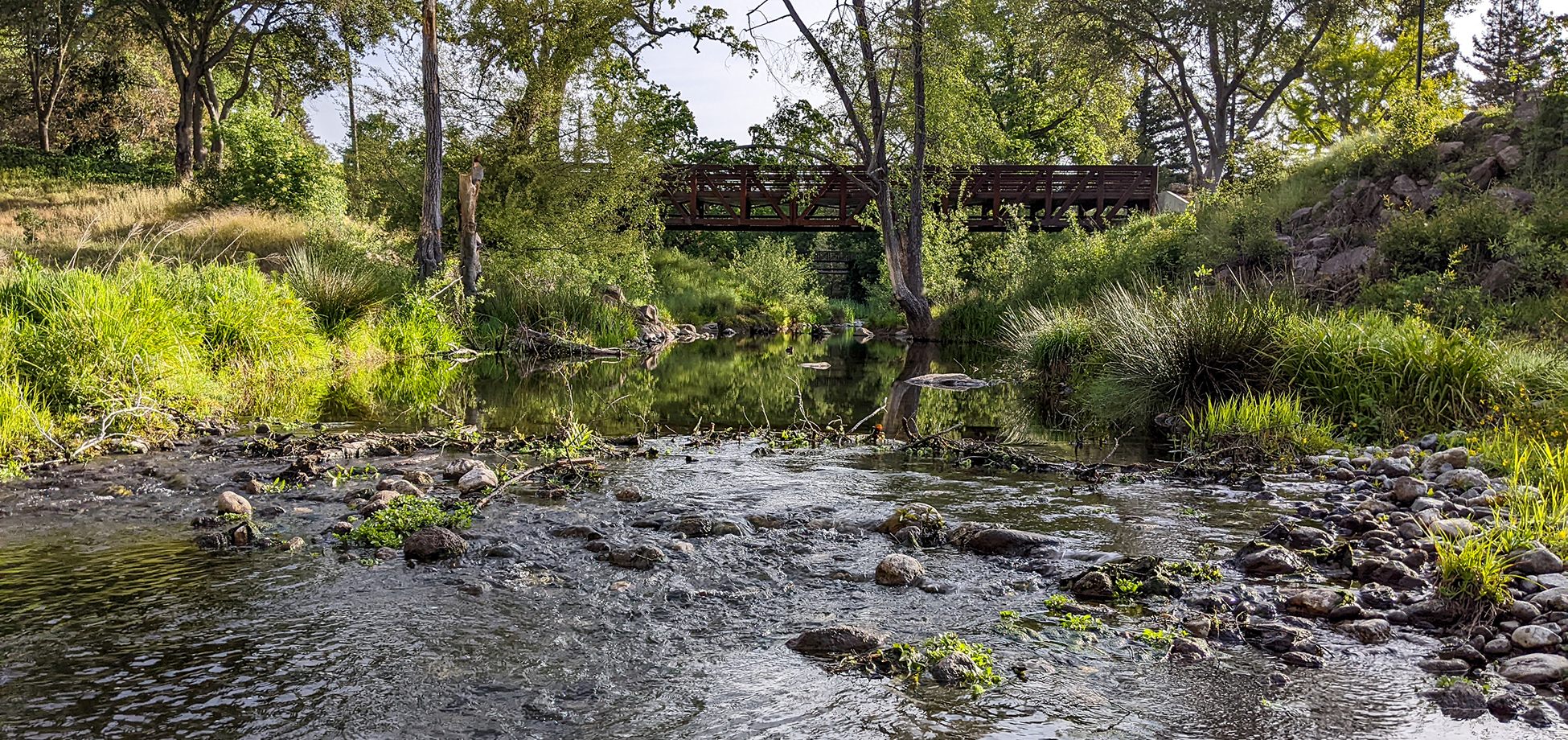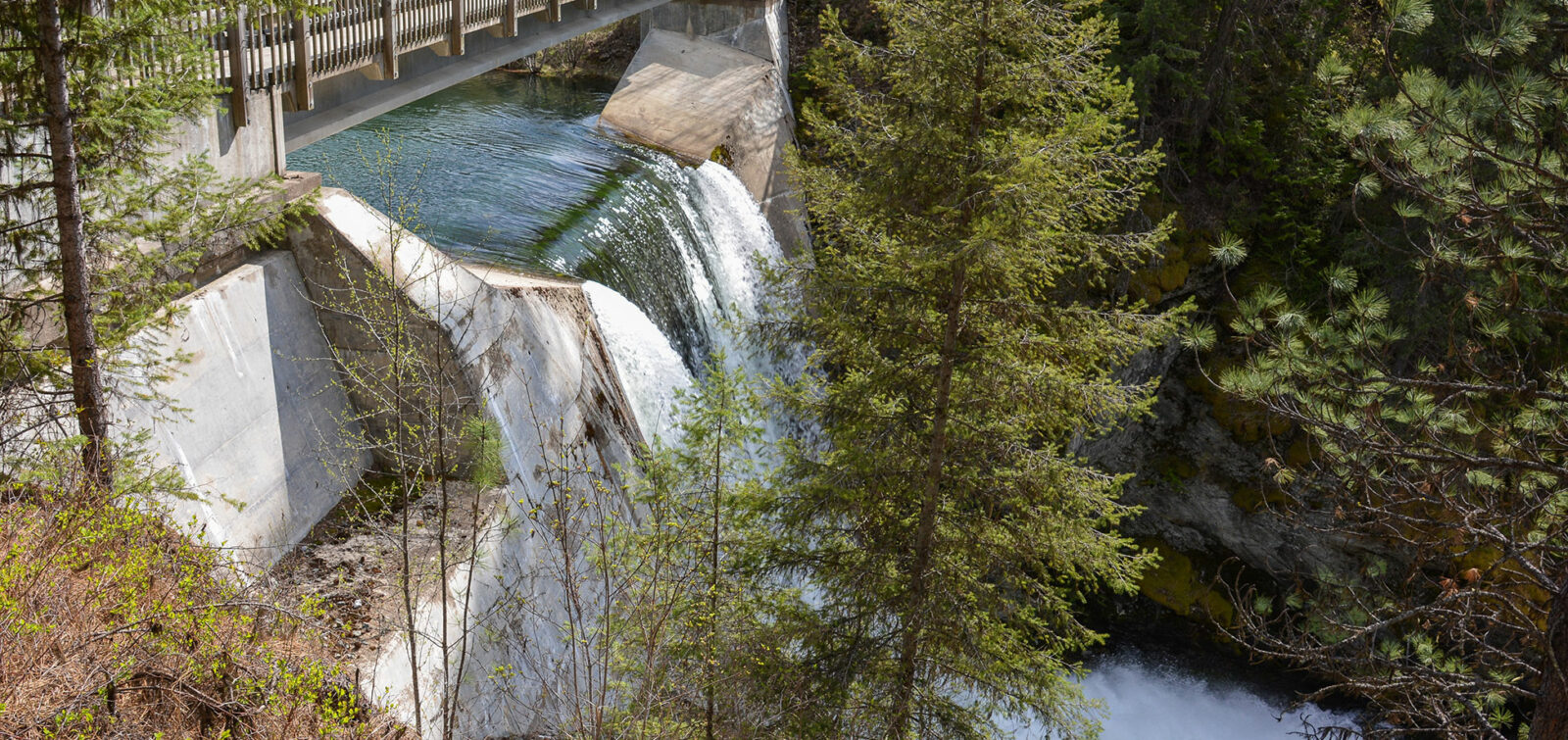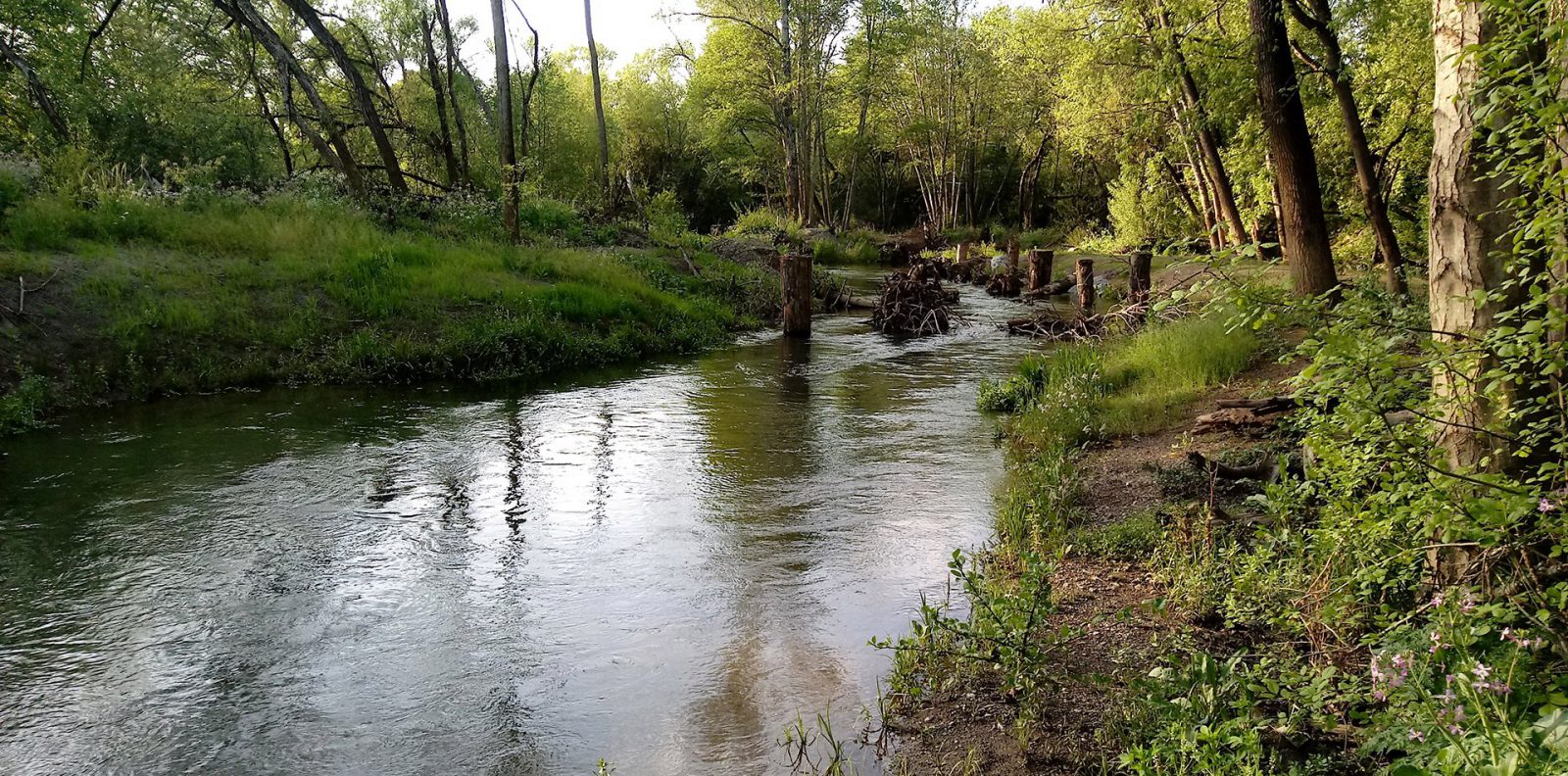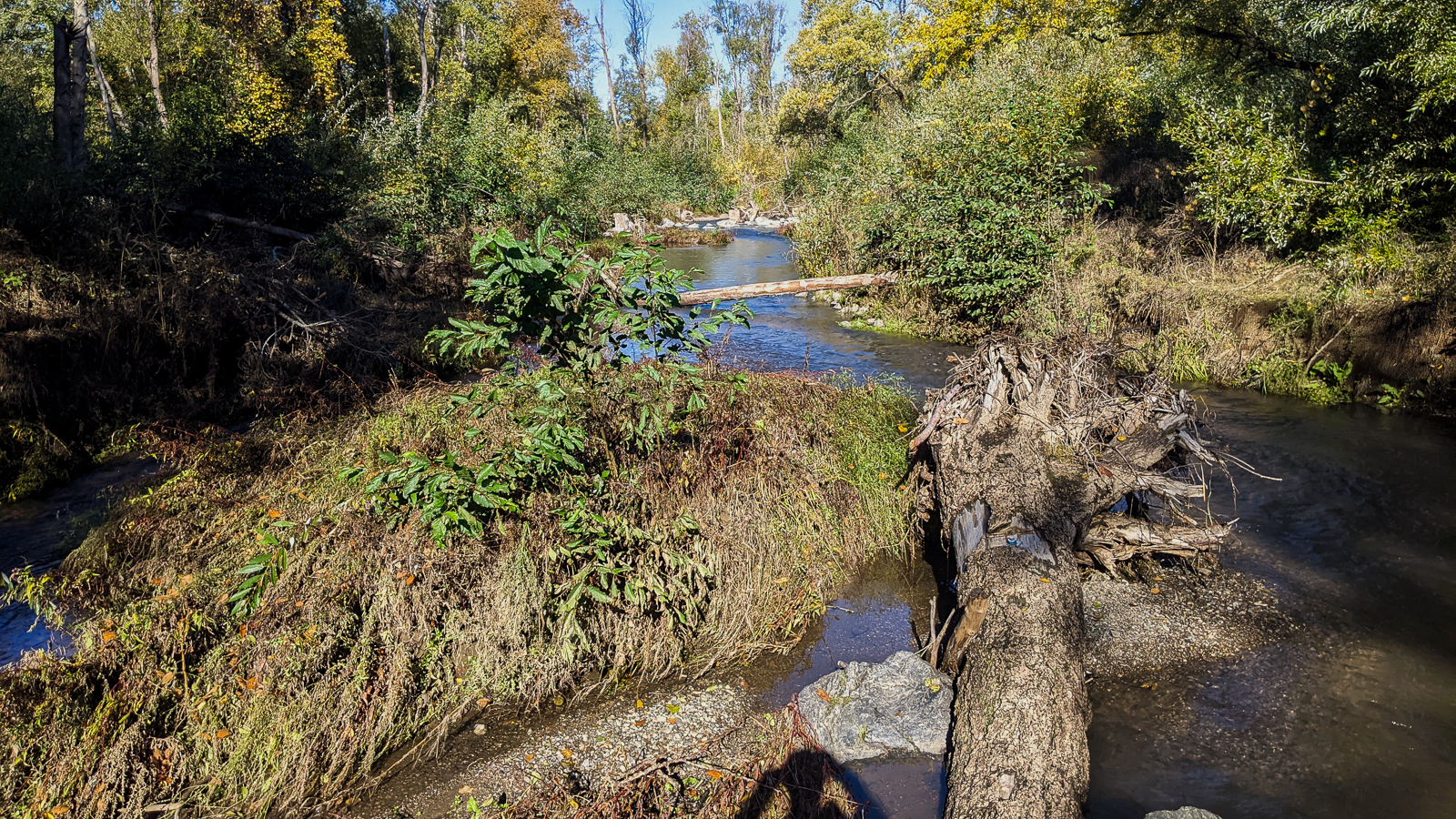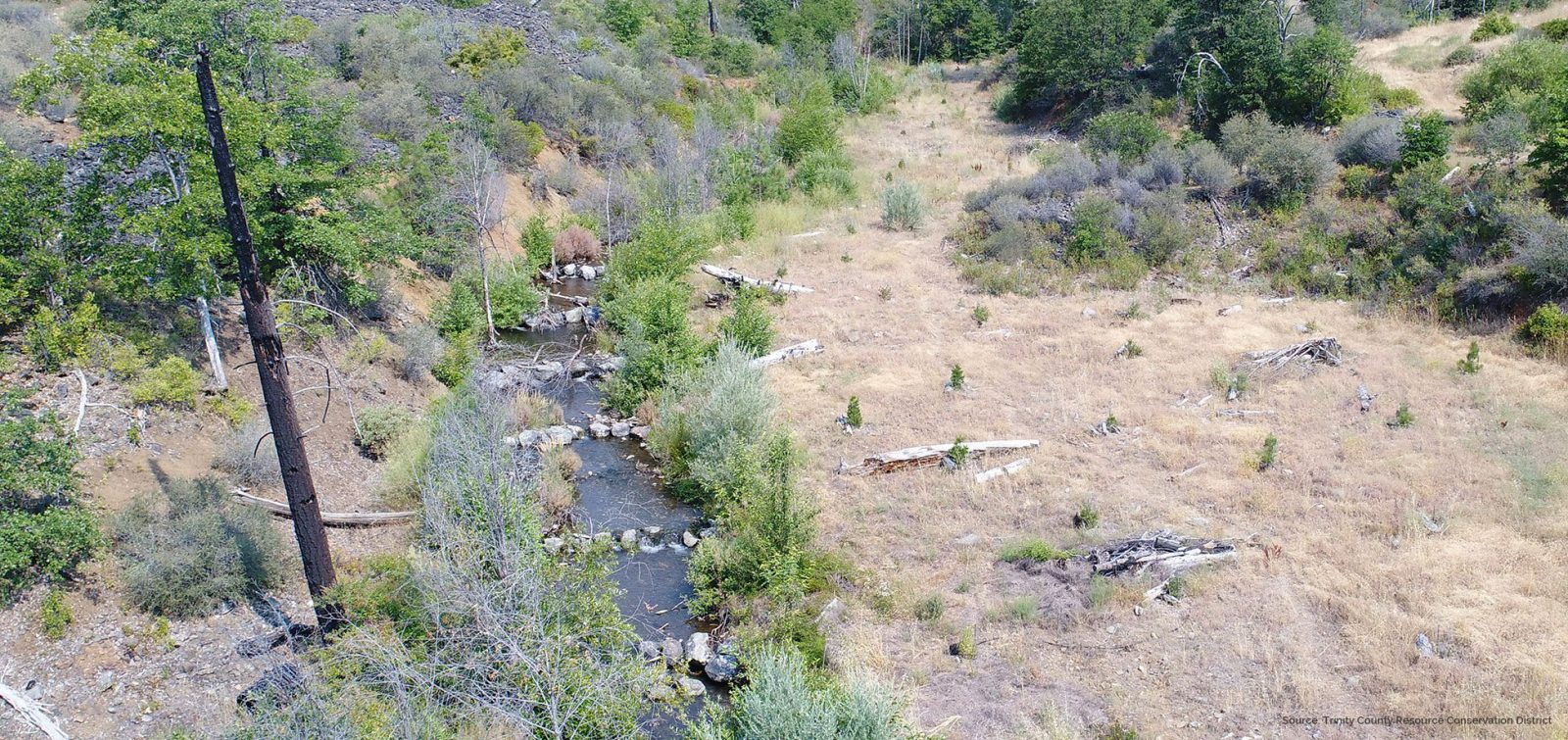Napa County Flood Control & Water Conservation District led the removal of a thirteen-foot dam and reconstruction of a thousand feet of streambed on Milliken Creek for flood control and fish passage benefits.
Beginning in the summer of 2017, Napa County partnered with a local homeowners’ association to implement a series of drainage improvements to reduce flooding along Milliken Creek. Milliken Creek is a tributary to the Napa River flowing from the east side of the Napa Valley just north of the city of Napa. A 13-foot-tall dam was constructed on Milliken Creek in 1955 to divert and control the waters along this portion of Milliken Creek within the Silverado Resort and Spa golf course.
Recent studies found the dam to be a cause of flooding to nearby residents during large winter rain events. Studies also found the dam caused a migration barrier for threatened steelhead trout by eliminating access to high-value rearing habitat for juvenile steelhead trout.
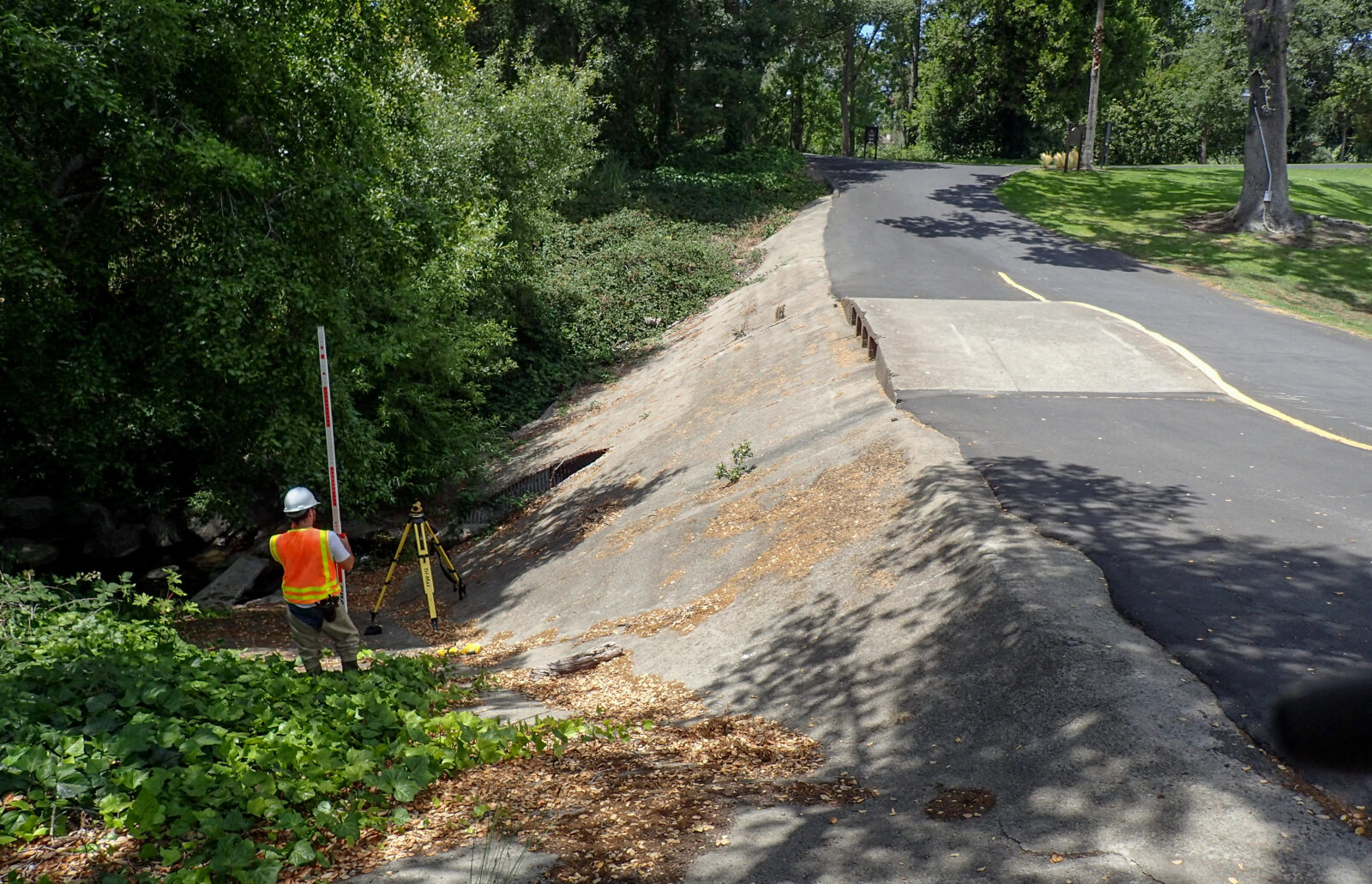

A 13-foot-tall earthen dam was built over Milliken Creek, limiting fish passage.
In 2014, ESA was selected as part of a consultant team to support Napa County with designing the Milliken Creek Flood Reduction and Fish Passage Project. ESA led the restoration design and engineering for the dam removal, including a natural channel design, habitat enhancements, biotechnical bank stabilization, and native plant revegetation. To address concerns that the removal of the dam would cause channel instability, ESA took an innovative design approach. The design relied on geomorphic processes—widening the channel banks in a manner that promotes deposition of sediment to sustain a natural, yet resilient, streambed. In addition to restoration design and engineering, ESA also supported Napa County with environmental review and permitting for the project.

Implementation of the dam removal and channel reconstruction was led by Napa County over the summer of 2017 with support from ESA. Milliken Creek has since experienced several large storm events, particularly in the rainy winter of 2019. Such large storm events produced high flows capable moving large amounts of sediment from the headwaters through the project reach. As designed, the reconstructed channel experienced significant sediment deposition and geomorphic change, yet remained naturally stable and fish-passable.
Additionally, over the past five years, the site’s native revegetation has flourished, resulting in a well-connected riparian corridor in a reach that once was disconnected by a large man-made impoundment. With this portion of Milliken Creek restored, not only are steelhead trout able to reach their rearing habitat, but also Nature’s dam builders—beavers—have settled into the riverbank and made it their home.
